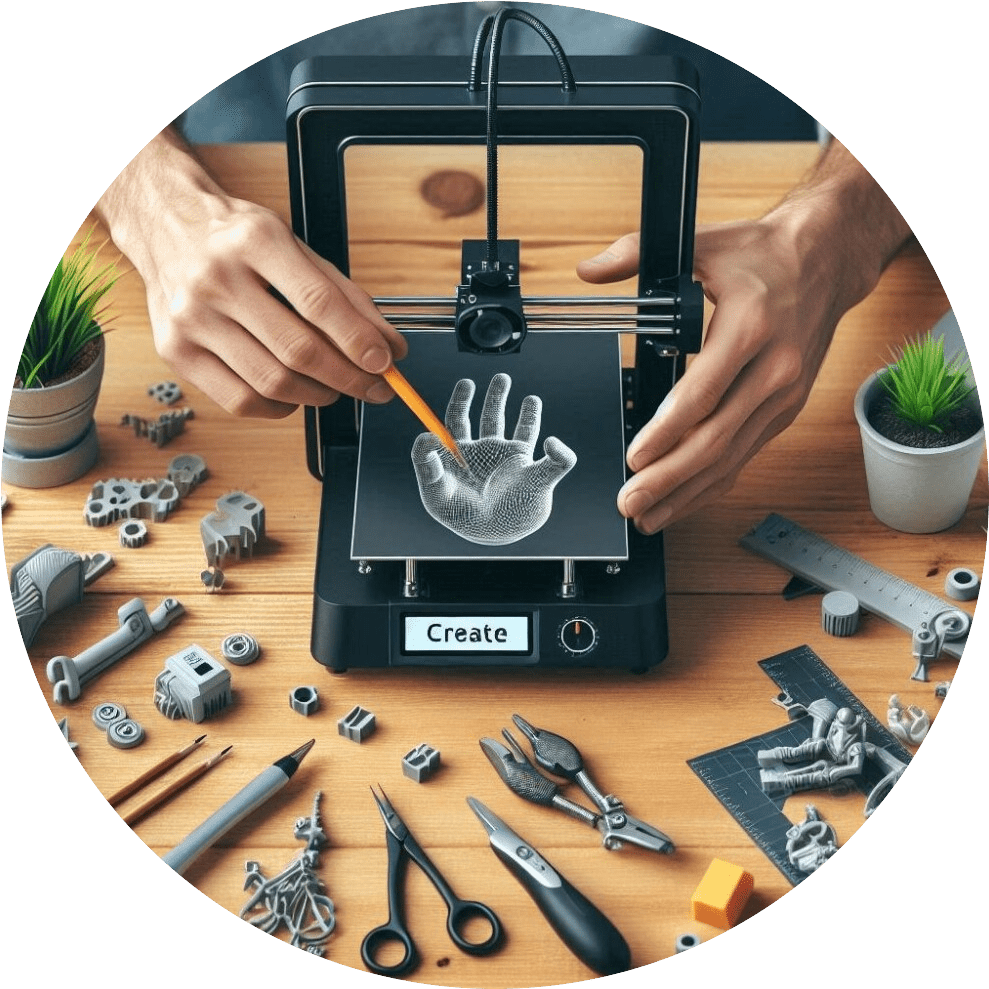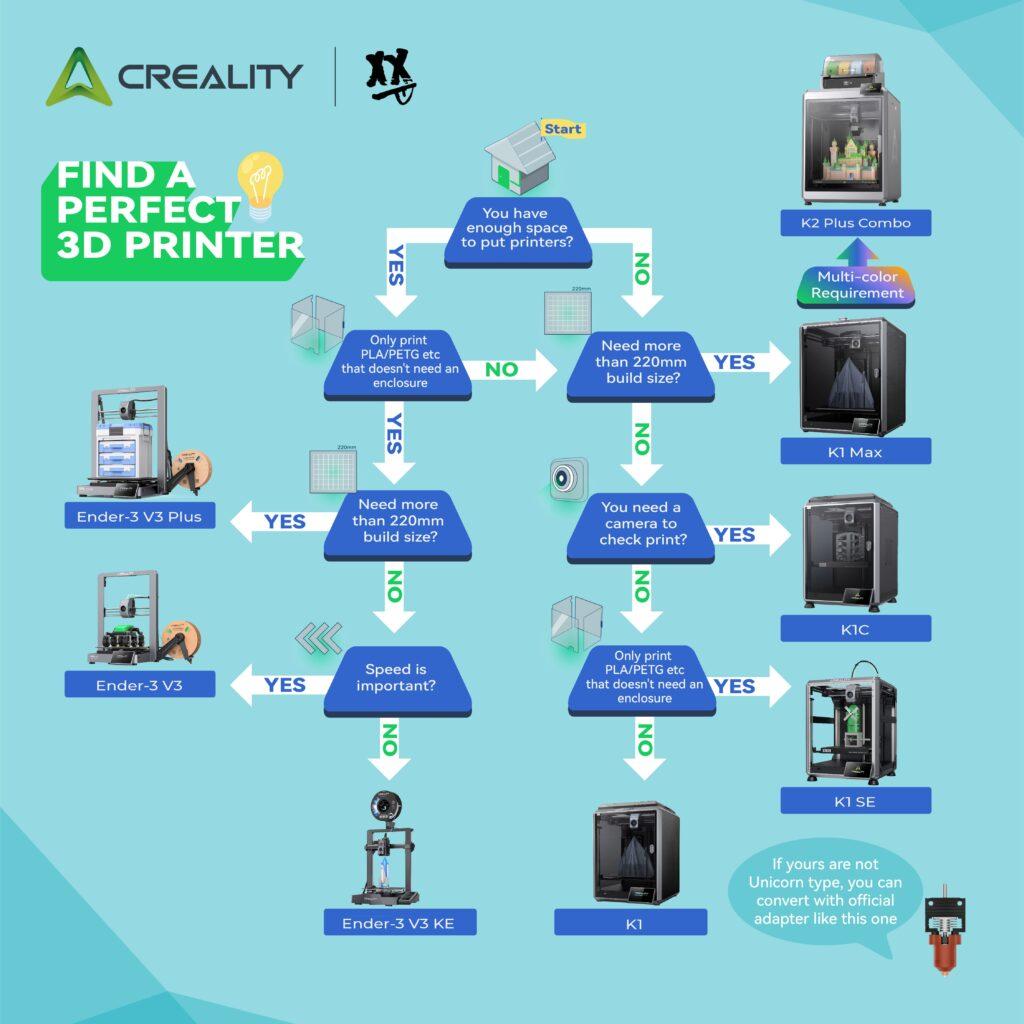
Learn how 3D printers are revolutionizing industries, empowering everyday inventors, and reshaping how we design, build, and innovate. Learn how this fast-growing tech is bringing the future of making into today.
A Spark in the Maker’s World
Imagine this: a teenager prints a new pair of shoes in her bedroom. A farmer fabricates a broken tractor part without leaving his land. A hospital builds a custom-fit implant tailored for one patient. This isn’t science fiction. It’s 3D printing.
3D printers are more than tools. They’re revolutionaries. They’ve stepped off the lab benches and into classrooms, workshops, hospitals, and homes, opening a door to possibilities we couldn’t imagine a decade ago. In this post, we’ll break down what 3D printers are, how they work, who’s using them, and why they matter more than ever.
What Is 3D Printing?
3D printing, also known as additive manufacturing, builds objects layer by layer using digital designs. Unlike traditional manufacturing, which often involves cutting away material, 3D printing adds only what’s needed. This saves time, money, and waste.
Think of it like squeezing icing out of a tube to draw a shape. The printer follows a path set by software and stacks material—plastic, metal, resin, even chocolate—to create a 3D object.
The Evolution of a Breakthrough
Though 3D printing has only recently gone mainstream, it’s been around since the 1980s. The early versions were bulky, expensive, and used mostly by researchers and large corporations. But as patents expired and technology improved, prices dropped and accessibility grew.
Today, hobbyists can buy a desktop printer for a few hundred dollars. Schools use them for hands-on STEM learning. Startups prototype products overnight. The once-niche tech has become a global movement.
Industries Transformed by 3D Printing
3D printing isn’t just one thing for one group. It’s changing how entire industries operate.
1. Healthcare:
Doctors now use 3D printing to make surgical models, prosthetics, and even bio-printed organs in development. Patients get faster, more precise care.
2. Aerospace:
NASA prints rocket parts that are lighter and more efficient. Airlines reduce costs by producing parts on demand.
3. Construction:
Houses and emergency shelters are being printed from concrete in days, not months, solving housing shortages worldwide.
4. Fashion and Art:
Designers print wearable clothes, shoes, and accessories that are bold, customized, and sustainable.
5. Education:
Students can touch their lessons—from dinosaur fossils to molecule models—thanks to 3D printing in classrooms.
6. Manufacturing:
Companies print tools, parts, and products faster and more flexibly. Small batches, custom items, and local production are easier than ever.
Stories from the Field
Take Maria, a high school teacher in Ohio. She started a 3D printing club with a donated printer. Within months, her students were making phone stands, jewelry, and parts for their science fair robots. One even launched a small online shop.
Or Raj, a prosthetic technician in India. He prints low-cost, custom-fit limbs for amputees in rural areas. Before, patients waited months. Now, they walk out in days.
These aren’t isolated cases. They’re signs of a movement.
Why It Matters: The Bigger Picture
3D printing isn’t just cool. It solves real problems:
- Speed: Ideas go from screen to physical form in hours.
- Cost: Less waste and on-demand production mean lower expenses.
- Customization: One size doesn’t fit all. 3D printing makes personal solutions possible.
- Sustainability: Local production cuts shipping emissions. Recycled materials reduce environmental impact.
- Innovation: With fewer barriers, more people can create.
It’s democratizing, making giving power to everyday inventors and breaking down gatekeepers.
Challenges on the Horizon
As powerful as it is, 3D printing isn’t perfect. There are hurdles:
- Material limitations: Not all materials are printable or durable enough for every job.
- Speed at scale: Printing one item is fast. Printing thousands? Not always efficient.
- Intellectual property: Designs can be copied and shared, raising copyright concerns.
- Training and skill gaps: Using these tools well still requires learning.
But these challenges are being tackled every day. As materials evolve and printers improve, so will the solutions.
Looking Forward: What’s Next?
The future is building itself—layer by layer. In the next decade, expect to see:
- Bioprinted organs and tissues in hospitals.
- Custom 3D-printed food tailored to health needs.
- Printable electronics are embedded directly into devices.
- Smart materials that react to touch, heat, or light.
And more people than ever will be part of this future. Kids are printing toys at home. Engineers are prototyping in their garages. Communities solving problems with local, on-demand tools.
Make Your Mark
3D printing has changed who gets to make, what they can make, and how fast they can do it. It empowers curiosity, speeds up innovation, and breaks the old manufacturing rules.
It’s not just a machine. It’s a movement.
Whether you’re a student, a teacher, an artist, an entrepreneur, or just someone with an idea, 3D printing is a door you can walk through. The tools are ready. The world is waiting. Now is your time to create.
Because the future of making isn’t coming. It’s printing.


